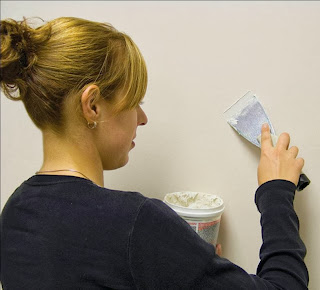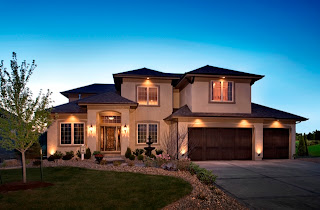It's a dream life for many, a seaside property, the sun and the
sand. However it is a very hard environment for our houses. I own a
property maintenance business in a coastal area of NSW Australia, which
has given me a great deal of experience with these problems. Hopefully
this article will help you identify problems that can occur living by
the sea, and give you some guidance in how to prevent unnecessary damage
occurring.
Gutters
I
see a large number of rusted gutters and downpipes in this area. Rust
is a common problem because of the high level of salt that end up on
your house. However there are ways to increase the life of your gutters
and downpipes. The easiest is to ensure the you clean or have your
gutters cleaned at least twice a year. I recommend that gutters are
cleaned at the end of Autumn, after the leaves have stopped falling and
before the rain in winter, and again at the end of spring and before the
fire danger period of summer. Clean gutters will allow the water to
drain away and take with it any salt residue. Blocked gutters result in a
build up of a salty silt that sits in your gutter and begins to corrode
at the paint and metal.
Along with keeping your gutters clean, is
making sure they still fall correctly. This means that there are no low
points in you gutter where the water will pool and not drain away
freely. In heavy rain you may notice your gutters overflowing in a
particular area, this is an indication of a possible low spot or
blockage. If you gutters appear crooked or uneven to the eye, then you
should get them checked and repaired if necessary.
The next points
relate to your choice of gutters and up keep. Ensure that you paint
your gutters. Not only will this improve the look of your house, it will
help to preserve the gutters. If having new gutters installed make sure
you do your research. At $50+ per meter of gutter installed you want to
make sure that you are buying quality gutters that come with a
warranty.
Screen doors, fly screens and security doors
Just
like gutters, screen doors, fly screens and screen doors, are
susceptible to rust. But you have bought marine grade stainless steel?
While this is a great product, stainless steel does rust. Make sure from
time to time you wash your security or fly-screen doors. When replacing
fly-screens opt for a nylon based mesh. Although it is not as tough as a
wire based product it will have a longer life in a coastal environment
Locks
I
have been asked to deal with a number of sticky locks. Coastal
environments are very humid. Along with salt residue, a build up of dust
inside the lock turns to a virtual glue when combine with the moisture
from the air. Generally this is something I only see in old locks or
locks in beach front streets. Never be tempted to spray WD40, de-greaser
or an oil based lubricant into the lock. Although this may make the lock
work in the short term, it will attract more dirt and dust and the lock
will seize again. Often the lock just needs a small amount of graphite
powder, a carbon based dry lubricant. This will usually get things
moving again. If necessary the barrel may need to be removed and be
cleaned before the lock returns to normal
Shade sails, umbrellas and fabric awnings
Shade
sails, umbrellas and fabric awnings have become a popular and practical
architectural feature of many houses. The shade they provide while
allowing light and air movement are fantastic. They are also relatively
cheap, available in a never ending array of shapes, sizes and colours,
and can be taken down or wound in for the cooler months. Wind is the
number one enemy of these shade systems. As a licensed shade systems
installer, I am aware of the massive forces that they catch. Shade sails
are called sails for a reason, and I have seen many a fascia and
guttering pulled away, windows broken, sails torn and other damage from a
combination of incorrectly installed or incorrectly tensioned shade
sails. Unfortunately it isn't as simple as stringing the sail up between
a couple of post and screwing it to your house. It is an achievable DIY
project but I would emphasize the importance to study up and talk to
people about installing them. They may be relatively inexpensive, but
they can cause a lot of expensive damage. In relation to umbrellas and
awnings - DON'T FORGET TO WIND THEM IN OR TAKE THEM DOWN - they are
easily damaged and often repairing them is very difficult and expensive.
Fencing
Fencing
is the last thing I will mention. I see a lot of rusted fences because
the bottom sheets are in contact with the ground. Most manufacturers
specify a particular distance that the panels should be installed from
the ground. It is well worthwhile following these directions. I also see
a large number of crooked fences that have moved over time. This is
often due to the sandy nature of the soil. It is something that is
difficult to address, but often installing larger posts deeper into the
ground or concreting every third post for example may address the
problem and prevent it from occurring. Other issues are things growing
up against the fence and pushing it over, or in the case of vines,
pulling it down. Again make sure you maintain your fences. Painting or
oiling will extend the life of paling or wooden fences. Washing
colorbond or other metal fences can also help to extend the life of the
fence, although correct installation and installing quality fences with
long warranties is probably the best option in my opinion.
So
hopefully this has helped some people, or opened their eyes to a few
issues that their homes face on the coast. We live in a great
environment and with a little work we can avoid the extra hassles that
may come up.
Brendan is the owner of Just Fix It Property Maintenance, on the Central Coast of NSW Australia. You can visit the website http://www.justfixitpm.com.au to see the range of services provided by this professional company.
Article Source:
http://EzineArticles.com/?expert=Brendan_E_May

